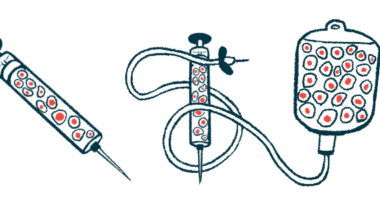Beam Cleared to Launch Trial of BEAM-101, Gene Editing Therapy

The U.S. Food and Drug Administration (FDA) has cleared Beam Therapeutics to start clinical testing of BEAM-101, the company’s investigational gene editing cell therapy for sickle cell disease (SCD).
“BEAM-101 has the potential to offer a one-time treatment for patients with sickle cell disease, and this clearance enables the important transition from a preclinical to a clinical-stage company, bringing us closer to our ultimate goal of helping patients,” John Evans, Beam’s CEO, said in a press release.
Red blood cells use hemoglobin, a protein, to transport oxygen throughout the body. SCD is caused by mutations that lead to the production of an abnormal form of hemoglobin — or more specifically, an abnormal form of the protein normally found in children and adults.
In early development, the body makes a different type of hemoglobin, called fetal hemoglobin, which helps to ensure that enough oxygen is being delivered to the developing fetus. But the body typically stops producing fetal hemoglobin and starts making the adult form of the protein within the first few months after birth. However, some people have genetic mutations that cause fetal hemoglobin to be produced throughout life.
The aim of BEAM-101 is to collect a patient’s blood cell precursors, called hematopoietic cells, and genetically engineer them to insert mutations that result in the lifelong production of fetal hemoglobin. Cells are then returned to the patient in the form of a stem cell transplant.
By enabling the production of fetal hemoglobin, which is expected to compensate for the lack of functional adult protein, BEAM-101 may alleviate the signs and symptoms of SCD and other inherited blood disorders resulting from defects in hemoglobin, such as beta thalassemia.
The company is preparing to launch a Phase 1/2 clinical trial, called BEACON-101, to evaluate the safety and efficacy of BEAM-101 in treating SCD.
Another therapy, called BEAM-102, aims to use similar gene editing technology to “correct” the disease-causing mutation. The company is currently conducting preclinical (lab) tests, with the aim of requesting approval to also test this therapy in people.
At the upcoming American Society of Hematology (ASH) annual meeting, taking place virtually and in Atlanta this December, researchers from Beam will present new preclinical data on the investigational treatment. Findings will be featured in the poster “Conversion of HbS to Hb G-Makassar By Adenine Base Editing Is Compatible with Normal Hemoglobin Function.”
BEAM-102 specifically aims to change the disease-causing hemoglobin gene into a version of the gene called the Makassar variant, which is particularly common in southeast Asia and “behaves as a functional hemoglobin,” according to researchers.
Preclinical experiments suggest that BEAM-102 can convert the SCD-causing mutation into the Makassar variant in more than 70% gene copies, and found that edited cells are able to survive once implanted into mice.
“The additional preclinical data being presented from our Makassar program continue to validate the potential of our base editing approach to treating SCD, which is designed to correct sickle globin to a normally functioning hemoglobin variant,” Giuseppe Ciaramella, PhD, Beam’s president and chief scientific officer, said in a separate press release.






